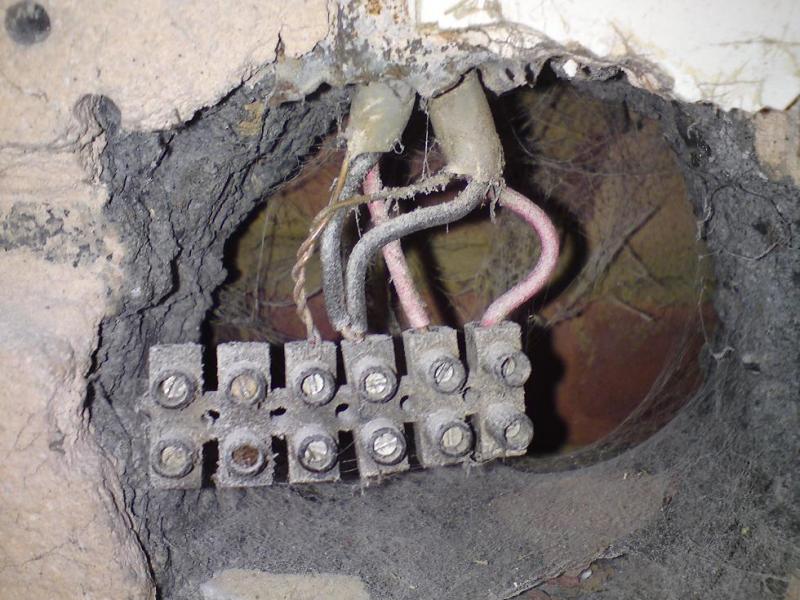We dissmantled our kitchen a few days ago and found some dodgy connection block which the cooker was wired into.
There appears to be two twin and earth cables in parrallel coming down the wall in the plaster which connect to this block. A double socket was also connected to this block which I have disconnected for the time being.
Both red wires going to the block are live (230ish volts tested with my multi meter).
I have added a pic so you can see what I mean. The neutrals are joined but not the live wires.
How can I work out if these two twin and earth wires are on the same ring and whether the red wires should be joined together?
I plan to turn of the electrics and turn on each circuit one at a time and check with my multi-meter to see if either one or both are live on which breaker. Apart from that what else can I do?
Thanks
Andy
There appears to be two twin and earth cables in parrallel coming down the wall in the plaster which connect to this block. A double socket was also connected to this block which I have disconnected for the time being.
Both red wires going to the block are live (230ish volts tested with my multi meter).
I have added a pic so you can see what I mean. The neutrals are joined but not the live wires.
How can I work out if these two twin and earth wires are on the same ring and whether the red wires should be joined together?
I plan to turn of the electrics and turn on each circuit one at a time and check with my multi-meter to see if either one or both are live on which breaker. Apart from that what else can I do?
Thanks
Andy


